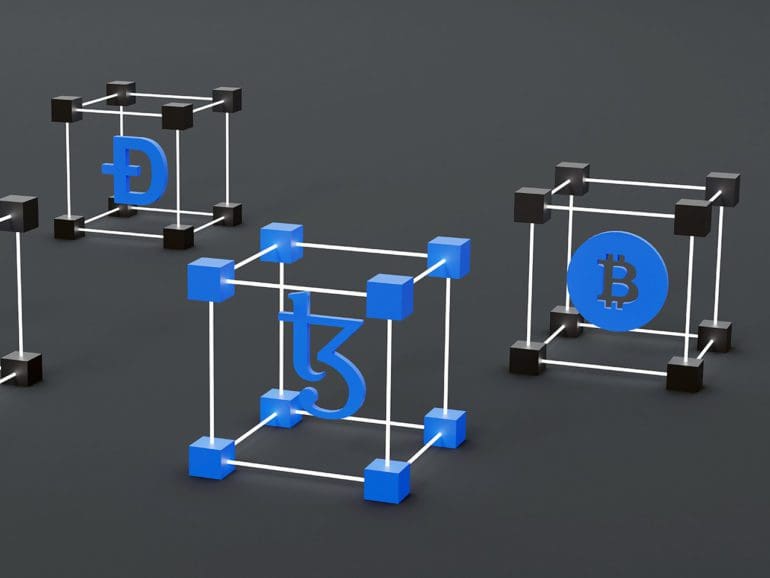The following is a guest post from Vijay Mehta, Chief Innovation Officer for Experian’s Consumer Information Services business in North America and the Managing Director of Global Solutions.
One thing remains clear amid the recent news stories about the falling values in the cryptocurrency market: financially well-positioned companies will survive, and the decentralized finance (DeFi) ecosystem will rebound in time.
Even more evident is that security throughout the DeFi lifecycle remains a real challenge to mainstream adoption, and — until that is resolved — the cryptocurrency market will not reach its full potential.
The good news is that at its core, blockchain is very secure.
By design, blockchain technology makes it virtually impossible to alter transactions once they have been verified, creating immutable records of truth. Even still, the trust aspect of conducting DeFi transactions (trading, lending, investing) becomes a bit complex for complete anonymity in decentralized networks.
The challenge is that the identification and authentication process can be a bit scary. Think about the highly complex 12-word passphrase or understanding security key management.
Cross-chain security an issue
Also, cross-chain bridges create vulnerabilities caused by architectural/algo differences in consensus, finality, block size, hashing, and more. With well-publicized hacks like Ronin and Wormhole that resulted in millions if not billions of dollars lost, cross-chain security remains a real issue.
So, how does the DeFi industry instill trust among consumers? Three progressive drivers will be key: government regulation will drive standards that, in turn, will help define a multi-layered technology approach to tamping down fraud.
As the DeFi industry grows and scales, we will likely see regulations that require more significant standards around identity, such as Know Your Customer (KYC) and management of personal identifying information (PII).
As regulators and others more deeply enter the DeFi space from centralized finance, or CeFi (the traditional financial system we know), better systems will be established to create greater trust and drive mainstream adoption.
In traditional CeFi, regulations around every aspect of trading, credit, and banking lay the foundation for a secure transactional environment. Over time, regulations that align DeFi to CeFi will emerge, including stable coin backing, risk management in lending, and KYC/AML checks when identifying a consumer.

Security environment needs to mature
This market shift may take some time, but at some point, the way we think about key management, identity, encryption, and other aspects of DeFi transactions will become more consistent. At that time, we will have a more mature security environment.
The industry will be on the right path when we see a more significant number of transactions from major global banks. It’s important to remember that transacting on the blockchain enables a less expensive mechanism for transferring funds and assets across geographies.
Drilling down how DeFi technology enables a more trusted consumer experience, striking a balance between anonymity and trust for consumers requires a multi-layered, instantaneous approach to mitigate risk and prevent fraud. This approach involves methods and technologies such as privacy-preserving identity, Secure Multiple Party Computation (SMPC), blockchain forensics, AI and graph analytics, fraudulent-wallet detection, and other off-chain factors.
These layers will bridge on- and off-blockchain information in crypto / DeFi transactions, provide additional security against multiple potential attack vectors, and begin to provide the protection we are used to seeing in CeFi.
A multi-layered, instantaneous approach will help mitigate one of the most well-publicized security risks that have plagued the DeFi market: token theft. It occurs in many forms, including bugs in the protocol or exchange, problems with management and oversight, or traditional fraud and scams. Introducing multiple layers of fraud prevention is the only way to address these various entry points to token theft.
Better loans, more liquidity
Bridging the on- and off-chain gap with truthful information while preserving the user’s privacy will enable consumers to interact safely with other financial products. This will help drive a lending environment that can offer better loans and more available liquidity.
AI will play a significant role in proving the truth in DeFi. There is a vast number of transactions openly available on the blockchains that can uncover fraudulent activity. Detecting suspicious transaction patterns, such as NFT wash trading, where individuals self-finance the trades with multiple related addresses, can indicate fraud. Identifying the association between illicit and fraudulent wallet addresses can also be another red flag for bad actors.
As the industry continues to mature, there will be better tools, a more robust user experience, and clear information regarding safety and security. Also, increased competition among DeFi products will create offerings that match and outperform CeFi.
As regulatory-driven standards begin to govern transactions, having authoritative data to resolve and verify identity will be critical in mitigating the current risk factors in DeFi transacting. Ultimately, this will increase consumer adoption and help ensure that DeFi fulfills its immense promise.


